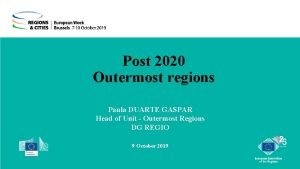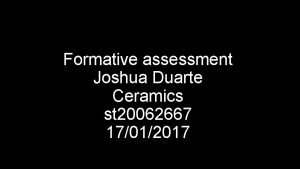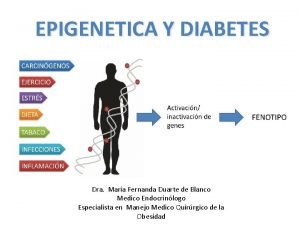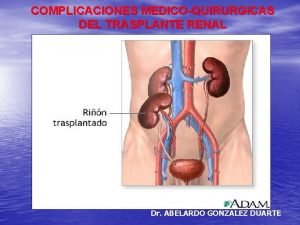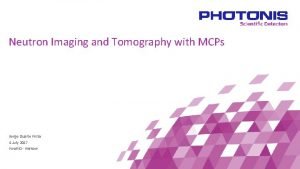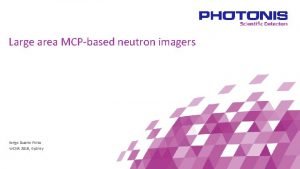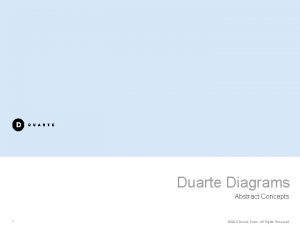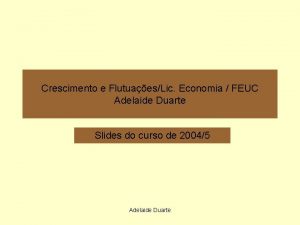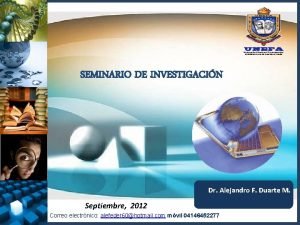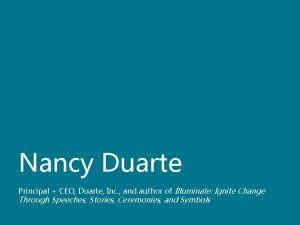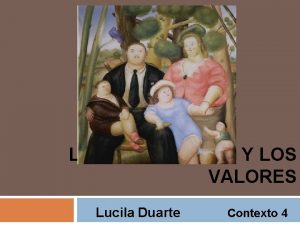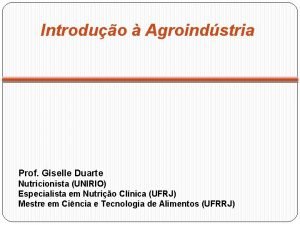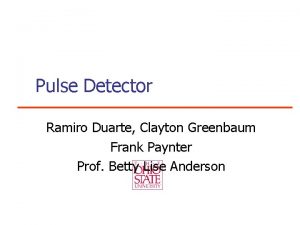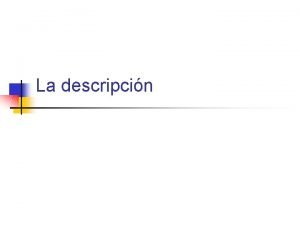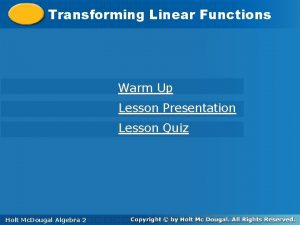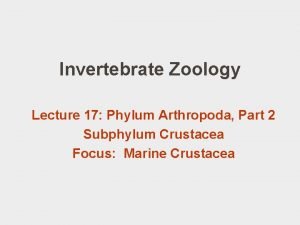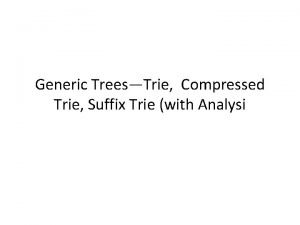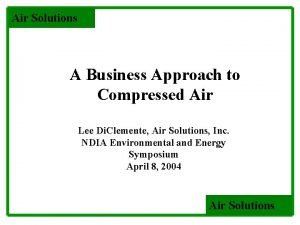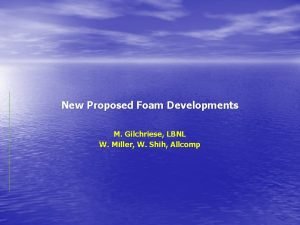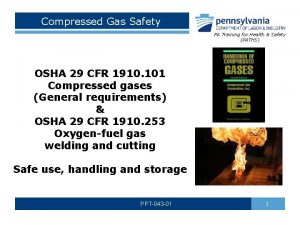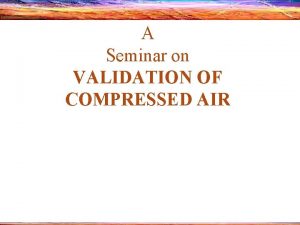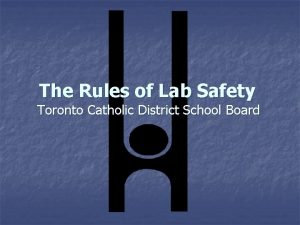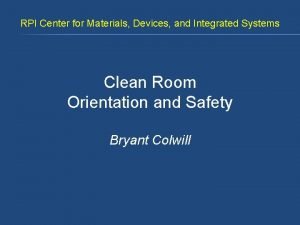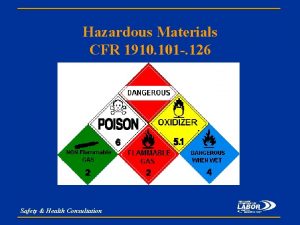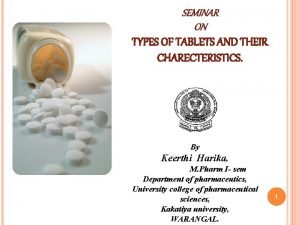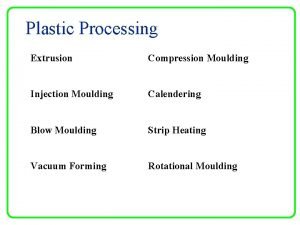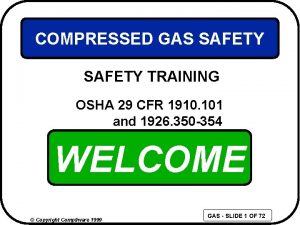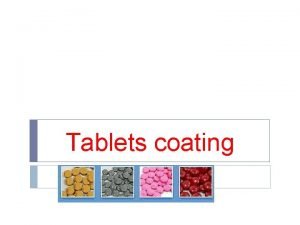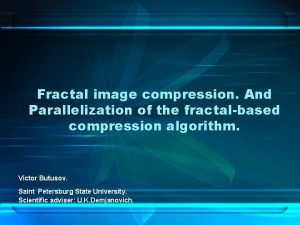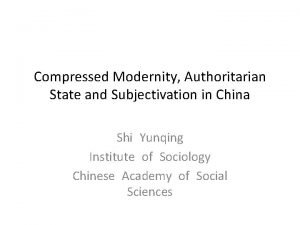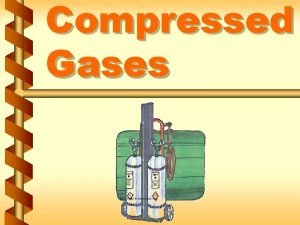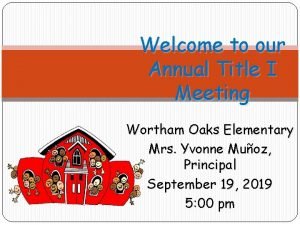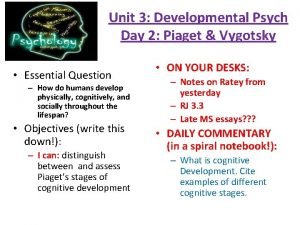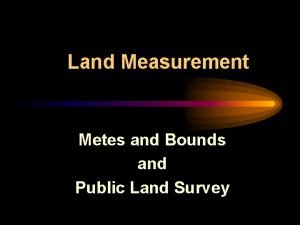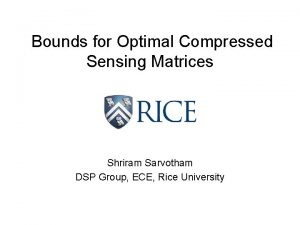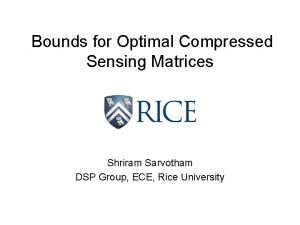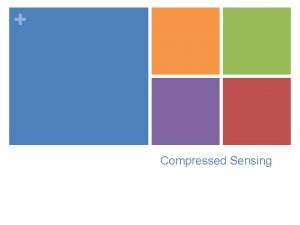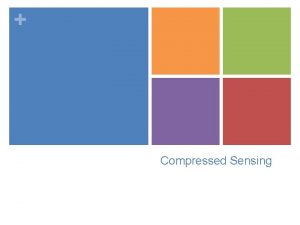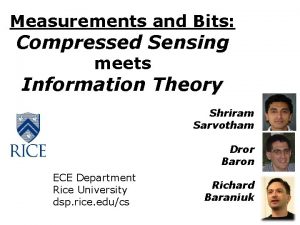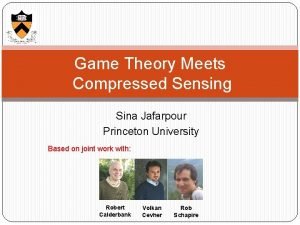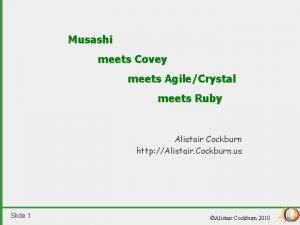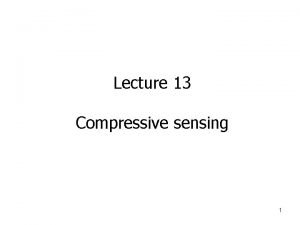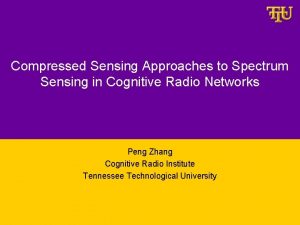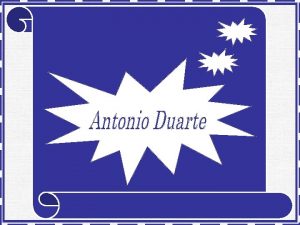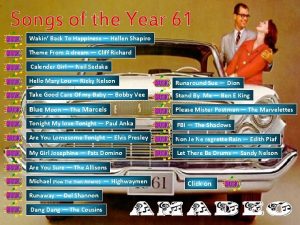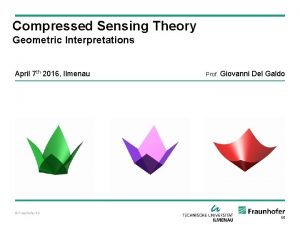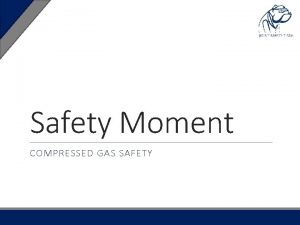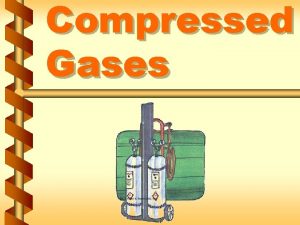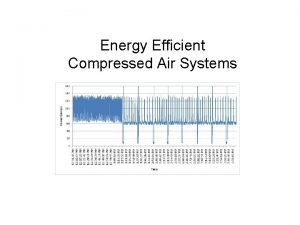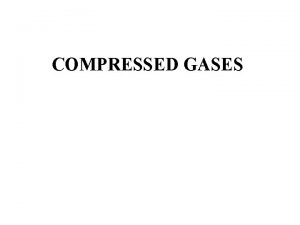Duarte Wakin Compressed Sensing meets Information Theory Sarvotham











![Optical Computation of Random Projections [Rice DSP 2006] • CS measurements directly in analog Optical Computation of Random Projections [Rice DSP 2006] • CS measurements directly in analog](https://slidetodoc.com/presentation_image_h/d2439dd4fdfd164a5f11381b49a0dfce/image-12.jpg)



![CS meets Information Theoretic Bounds [Sarvotham, Baron, & Baraniuk 2006] [Guo, Baron, & Shamai CS meets Information Theoretic Bounds [Sarvotham, Baron, & Baraniuk 2006] [Guo, Baron, & Shamai](https://slidetodoc.com/presentation_image_h/d2439dd4fdfd164a5f11381b49a0dfce/image-16.jpg)





![CS Analog to Communication System [Sarvotham, Baron, & Baraniuk 2006] • Model process source CS Analog to Communication System [Sarvotham, Baron, & Baraniuk 2006] • Model process source](https://slidetodoc.com/presentation_image_h/d2439dd4fdfd164a5f11381b49a0dfce/image-22.jpg)
![Single-Letter Bounds • Theorem: [Sarvotham, Baron, & Baraniuk 2006] For sparse signal with rate-distortion Single-Letter Bounds • Theorem: [Sarvotham, Baron, & Baraniuk 2006] For sparse signal with rate-distortion](https://slidetodoc.com/presentation_image_h/d2439dd4fdfd164a5f11381b49a0dfce/image-23.jpg)
![Goal: Precise Single-letter Characterization of Optimal CS [Guo, Baron, & Shamai 2009] Goal: Precise Single-letter Characterization of Optimal CS [Guo, Baron, & Shamai 2009]](https://slidetodoc.com/presentation_image_h/d2439dd4fdfd164a5f11381b49a0dfce/image-24.jpg)

![Main Result: Single-letter Characterization [Guo, Baron, & Shamai 2009] channel , • Result 1: Main Result: Single-letter Characterization [Guo, Baron, & Shamai 2009] channel , • Result 1:](https://slidetodoc.com/presentation_image_h/d2439dd4fdfd164a5f11381b49a0dfce/image-26.jpg)


![Decoupling Result [Guo, Baron, & Shamai 2009] • Result 2: Large system limit; any Decoupling Result [Guo, Baron, & Shamai 2009] • Result 2: Large system limit; any](https://slidetodoc.com/presentation_image_h/d2439dd4fdfd164a5f11381b49a0dfce/image-29.jpg)


![Sparse Measurement Matrices [Baron, Sarvotham, & Baraniuk 2009] • • LDPC measurement matrix (sparse) Sparse Measurement Matrices [Baron, Sarvotham, & Baraniuk 2009] • • LDPC measurement matrix (sparse)](https://slidetodoc.com/presentation_image_h/d2439dd4fdfd164a5f11381b49a0dfce/image-32.jpg)
![CS Decoding Using BP [Baron, Sarvotham, & Baraniuk 2009] • Measurement matrix represented by CS Decoding Using BP [Baron, Sarvotham, & Baraniuk 2009] • Measurement matrix represented by](https://slidetodoc.com/presentation_image_h/d2439dd4fdfd164a5f11381b49a0dfce/image-33.jpg)
![Identical Single-letter Characterization w/BP [Guo, Baron, & Shamai 2009] • Result 3: Conditioned on Identical Single-letter Characterization w/BP [Guo, Baron, & Shamai 2009] • Result 3: Conditioned on](https://slidetodoc.com/presentation_image_h/d2439dd4fdfd164a5f11381b49a0dfce/image-34.jpg)


![Runtime [seconds] CS-BP is O(Nlog 2(N)) N (M=0. 4 N, =0. 1, =100, q=0. Runtime [seconds] CS-BP is O(Nlog 2(N)) N (M=0. 4 N, =0. 1, =100, q=0.](https://slidetodoc.com/presentation_image_h/d2439dd4fdfd164a5f11381b49a0dfce/image-37.jpg)
![Fast CS Decoding [Sarvotham, Baron, & Baraniuk 2006] Fast CS Decoding [Sarvotham, Baron, & Baraniuk 2006]](https://slidetodoc.com/presentation_image_h/d2439dd4fdfd164a5f11381b49a0dfce/image-38.jpg)













- Slides: 51

Duarte Wakin Compressed Sensing meets Information Theory Sarvotham Baraniuk Dror Baron drorb@ee. technion. ac. il www. ee. technion. ac. il/people/drorb Guo Shamai

Technology Breakthroughs • Sensing, Computation, Communication – fast, readily available, cheap • Progress in individual disciplines (computing, networks, comm, DSP, …)

The Data Deluge

The Data Deluge • Challenges: – Exponentially increasing amounts of data § myriad different modalities (audio, image, video, financial, seismic, weather …) § global scale acquisition – Analysis/processing hampered by slowing Moore’s law § finding “needle in haystack” – Energy consumption • Opportunities (today)

From Sampling to Compressed Sensing

Sensing by Sampling • • • Sample data at Nyquist rate (2 x highest frequency in signal) Compress data using model (e. g. , sparsity) Lots of work to throw away >90% of the coefficients Most computation at sensor (asymmetrical) Brick wall to performance of modern acquisition systems sample compress transmit/store sparse wavelet transform receive decompress

Sparsity / Compressibility • Many signals are sparse in some representation/basis (Fourier, wavelets, …) pixels large wavelet coefficients wideband signal samples large Gabor coefficients

Compressed Sensing • Shannon/Nyquist sampling theorem – – must sample at 2 x highest frequency in signal worst case bound for any bandlimited signal too pessimistic for some classes of signals does not exploit signal sparsity/compressibility • Seek direct sensing of compressible information • Compressed Sensing (CS) – sparse signals can be recovered from a small number of nonadaptive (fixed) linear measurements – [Candes et al. ; Donoho; Rice, …]

Compressed Sensing via Random Projections • Measure linear projections onto random basis where data is not sparse – mild “over-sampling” in analog • Decode (reconstruct) via optimization • Highly asymmetrical (most computation at receiver) project receive transmit/store decode

CS Encoding • Replace samples by more general encoder based on a few linear projections (inner products) measurements sparse signal # non-zeros

Universality via Random Projections • Random projections • Universal for any compressible/sparse signal class measurements sparse signal # non-zeros
![Optical Computation of Random Projections Rice DSP 2006 CS measurements directly in analog Optical Computation of Random Projections [Rice DSP 2006] • CS measurements directly in analog](https://slidetodoc.com/presentation_image_h/d2439dd4fdfd164a5f11381b49a0dfce/image-12.jpg)
Optical Computation of Random Projections [Rice DSP 2006] • CS measurements directly in analog • Single photodiode

First Image Acquisition ideal 64 x 64 image (4096 pixels) 400 wavelets image on DMD array 1600 random meas.

CS Signal Decoding • Goal: find x given y • Ill-posed inverse problem • Decoding approach – search over subspace of explanations to measurements – find “most likely” explanation – universality accounted for during optimization • Linear program decoding [Candes et al. , Donoho] – small number of samples – computationally tractable • Variations – greedy (matching pursuit) [Tropp et al. , Needell et al. , . . . ] – optimization [Hale et al. , Figueiredo et al. ]

CS Hallmarks • CS changes rules of data acquisition game – exploits a priori sparsity information to reduce #measurements • Hardware/software: Universality – same random projections for any compressible signal class – simplifies hardware and algorithm design • Processing: Information scalability – random projections ~ sufficient statistics – same random projections for range of tasks § decoding > estimation > recognition > detection – far fewer measurements required to detect/recognize • Next generation data acquisition ü new imaging devices – new distributed source coding algorithms [Baron et al. ]
![CS meets Information Theoretic Bounds Sarvotham Baron Baraniuk 2006 Guo Baron Shamai CS meets Information Theoretic Bounds [Sarvotham, Baron, & Baraniuk 2006] [Guo, Baron, & Shamai](https://slidetodoc.com/presentation_image_h/d2439dd4fdfd164a5f11381b49a0dfce/image-16.jpg)
CS meets Information Theoretic Bounds [Sarvotham, Baron, & Baraniuk 2006] [Guo, Baron, & Shamai 2009]

Fundamental Goal: Minimize • Compressed sensing aims to minimize resource consumption due to measurements • Donoho: “Why go to so much effort to acquire all the data when most of what we get will be thrown away? ”

Signal Model • Signal entry Xn= Bn. Un • iid Bn» Bernoulli( ) sparse • iid Un» PU PX Bernoulli( ) Multiplier PU

Non-Sparse Input • Can use =1 Xn= Un PU

Measurement Noise • Measurement process is typically analog • Analog systems add noise, non-linearities, etc. • Assume Gaussian noise for ease of analysis • Can be generalized to non-Gaussian noise

Noise Model • • Noiseless measurements denoted y 0 Noise Noisy measurements Unit-norm columns SNR= noiseless SNR
![CS Analog to Communication System Sarvotham Baron Baraniuk 2006 Model process source CS Analog to Communication System [Sarvotham, Baron, & Baraniuk 2006] • Model process source](https://slidetodoc.com/presentation_image_h/d2439dd4fdfd164a5f11381b49a0dfce/image-22.jpg)
CS Analog to Communication System [Sarvotham, Baron, & Baraniuk 2006] • Model process source encoder channel encoder CS measurement as measurement channel decoder source decoder CS decoding • Measurements provide information!
![SingleLetter Bounds Theorem Sarvotham Baron Baraniuk 2006 For sparse signal with ratedistortion Single-Letter Bounds • Theorem: [Sarvotham, Baron, & Baraniuk 2006] For sparse signal with rate-distortion](https://slidetodoc.com/presentation_image_h/d2439dd4fdfd164a5f11381b49a0dfce/image-23.jpg)
Single-Letter Bounds • Theorem: [Sarvotham, Baron, & Baraniuk 2006] For sparse signal with rate-distortion function R(D), lower bound on measurement rate s. t. SNR and distortion D • Numerous single-letter bounds – – – – [Aeron, Zhao, & Saligrama] [Akcakaya & Tarokh] [Rangan, Fletcher, & Goyal] [Gastpar & Reeves] [Wang, Wainwright, & Ramchandran] [Tune, Bhaskaran, & Hanly] …
![Goal Precise Singleletter Characterization of Optimal CS Guo Baron Shamai 2009 Goal: Precise Single-letter Characterization of Optimal CS [Guo, Baron, & Shamai 2009]](https://slidetodoc.com/presentation_image_h/d2439dd4fdfd164a5f11381b49a0dfce/image-24.jpg)
Goal: Precise Single-letter Characterization of Optimal CS [Guo, Baron, & Shamai 2009]

What Single-letter Characterization? channel , posterior • Ultimately what can one say about Xn given Y? (sufficient statistic) • Very complicated • Want a simple characterization of its quality • Large-system limit:
![Main Result Singleletter Characterization Guo Baron Shamai 2009 channel Result 1 Main Result: Single-letter Characterization [Guo, Baron, & Shamai 2009] channel , • Result 1:](https://slidetodoc.com/presentation_image_h/d2439dd4fdfd164a5f11381b49a0dfce/image-26.jpg)
Main Result: Single-letter Characterization [Guo, Baron, & Shamai 2009] channel , • Result 1: Conditioned on Xn=xn, the observations (Y, ) are statistically equivalent to posterior degradation easy to compute… • Estimation quality from (Y, ) just as good as noisier scalar observation

Details • 2(0, 1) is fixed point of • Take-home point: degraded scalar channel • Non-rigorous owing to replica method w/ symmetry assumption – used in CDMA detection • Related analysis [Tanaka 2002, Guo & Verdu 2005] [Rangan, Fletcher, & Goyal 2009] – MMSE estimate (not posterior) using [Guo & Verdu 2005] – extended to several CS algorithms particularly LASSO

Decoupling
![Decoupling Result Guo Baron Shamai 2009 Result 2 Large system limit any Decoupling Result [Guo, Baron, & Shamai 2009] • Result 2: Large system limit; any](https://slidetodoc.com/presentation_image_h/d2439dd4fdfd164a5f11381b49a0dfce/image-29.jpg)
Decoupling Result [Guo, Baron, & Shamai 2009] • Result 2: Large system limit; any arbitrary (constant) L input elements decouple: • Take-home point: individual posteriors statistically independent

Sparse Measurement Matrices

Why is Decoding Expensive? Culprit: dense, unstructured measurements sparse signal nonzero entries
![Sparse Measurement Matrices Baron Sarvotham Baraniuk 2009 LDPC measurement matrix sparse Sparse Measurement Matrices [Baron, Sarvotham, & Baraniuk 2009] • • LDPC measurement matrix (sparse)](https://slidetodoc.com/presentation_image_h/d2439dd4fdfd164a5f11381b49a0dfce/image-32.jpg)
Sparse Measurement Matrices [Baron, Sarvotham, & Baraniuk 2009] • • LDPC measurement matrix (sparse) Mostly zeros in ; nonzeros » P Each row contains ¼Nq randomly placed nonzeros Fast matrix-vector multiplication ð fast encoding / decoding sparse matrix
![CS Decoding Using BP Baron Sarvotham Baraniuk 2009 Measurement matrix represented by CS Decoding Using BP [Baron, Sarvotham, & Baraniuk 2009] • Measurement matrix represented by](https://slidetodoc.com/presentation_image_h/d2439dd4fdfd164a5f11381b49a0dfce/image-33.jpg)
CS Decoding Using BP [Baron, Sarvotham, & Baraniuk 2009] • Measurement matrix represented by graph • Estimate real-valued input iteratively • Implemented via nonparametric BP [Bickson, Sommer, …] signal x measurements y
![Identical Singleletter Characterization wBP Guo Baron Shamai 2009 Result 3 Conditioned on Identical Single-letter Characterization w/BP [Guo, Baron, & Shamai 2009] • Result 3: Conditioned on](https://slidetodoc.com/presentation_image_h/d2439dd4fdfd164a5f11381b49a0dfce/image-34.jpg)
Identical Single-letter Characterization w/BP [Guo, Baron, & Shamai 2009] • Result 3: Conditioned on Xn=xn, the observations (Y, ) are statistically equivalent to identical degradation • Sparse matrices just as good • Result 4: BP is asymptotically optimal!

Decoupling Between Two Input Entries (N=500, M=250, =0. 1, =10) density

MMSE CS-BP vs Other CS Methods CS - BP M (N=1000, =0. 1, q=0. 02)
![Runtime seconds CSBP is ONlog 2N N M0 4 N 0 1 100 q0 Runtime [seconds] CS-BP is O(Nlog 2(N)) N (M=0. 4 N, =0. 1, =100, q=0.](https://slidetodoc.com/presentation_image_h/d2439dd4fdfd164a5f11381b49a0dfce/image-37.jpg)
Runtime [seconds] CS-BP is O(Nlog 2(N)) N (M=0. 4 N, =0. 1, =100, q=0. 04)
![Fast CS Decoding Sarvotham Baron Baraniuk 2006 Fast CS Decoding [Sarvotham, Baron, & Baraniuk 2006]](https://slidetodoc.com/presentation_image_h/d2439dd4fdfd164a5f11381b49a0dfce/image-38.jpg)
Fast CS Decoding [Sarvotham, Baron, & Baraniuk 2006]

Setting • LDPC measurement matrix (sparse) • Fast matrix-vector multiplication • Assumptions: – noiseless measurements – strictly sparse signal measurements sparse signal nonzero entries

Example 0 011000 ? 1 000110 ? 1 110010 ? 4 000011 ? ? ?

Example • What does zero measurement imply? • Hint: x strictly sparse 0 011000 ? 1 000110 ? 1 110010 ? 4 000011 ? ? ?

Example • Graph reduction! 0 011000 ? 1 000110 0 1 110010 0 4 000011 ? ? ?

Example • What do matching measurements imply? • Hint: non-zeros in x are real numbers 0 011000 ? 1 000110 0 1 110010 0 4 000011 ? ? ?

Example • What is the last entry of x? 0 011000 0 1 000110 0 1 110010 0 4 000011 0 1 ?

Main Results • # nonzeros per row • # measurements • Fast encoder [Sarvotham, Baron, & Baraniuk 2006] and decoder – sub-linear decoding complexity • Can be used for distributed content distribution – measurements stored on different servers – any M measurements suffice • Strictly sparse signals, noiseless measurements

Related Direction: Linear Measurements unified theory for linear measurement systems

Linear Measurements in Finance • Fama and French three factor model (1993) – stock returns explained by linear exposure to factors § e. g. , “market” (change in stock market index) – numerous factors can be used (e. g. , earnings to price) • Noisy linear measurements stock returns exposures factor returns unexplained (typically big)

Financial Prediction • Explanatory power ¼ prediction (can invest on this) • Goal: estimate x to explain y well compressed sensing financial prediction • Financial prediction vs CS: longer y, shorter x • Sounds easy, nonetheless challenging – NOISY data need lots of measurements – nonlinear, nonstationary

Application Areas for Linear Measurements • DSP (CS) • Finance • Medical imaging (tomography) • Information retrieval • Seismic imaging (oil industry)

Unified Theory of Linear Measurement • Common goals – minimal resources – robustness – computationally tractable • Inverse problems • Striving toward theory and efficient processing in linear measurement systems

THE END
 Paula duarte gaspar
Paula duarte gaspar Seo antonio duarte
Seo antonio duarte Josh duarte pottery
Josh duarte pottery Dra fernanda duarte
Dra fernanda duarte Abelardo gonzalez duarte
Abelardo gonzalez duarte Raquel duarte-davidson
Raquel duarte-davidson Serge duarte
Serge duarte Serge duarte
Serge duarte Diagram duarte
Diagram duarte Adelaide duarte feuc
Adelaide duarte feuc Dr alejandro duarte
Dr alejandro duarte Nancy duarte illuminate download
Nancy duarte illuminate download Las tradiciones y los valores
Las tradiciones y los valores Duarte slidedoc
Duarte slidedoc Cristian duarte edad
Cristian duarte edad Licenciado tony duarte
Licenciado tony duarte Listeriose
Listeriose Duarte
Duarte Ramiro duarte
Ramiro duarte Electra duarte murio
Electra duarte murio Descripcin
Descripcin Mafalda duarte
Mafalda duarte Stretches and compressions of linear functions
Stretches and compressions of linear functions A kind of rhythmic compressed language
A kind of rhythmic compressed language Pereopods
Pereopods Suffix trie
Suffix trie Compressed liquid water
Compressed liquid water Compressed air business
Compressed air business Compressed rvc foam
Compressed rvc foam Compressed gas cylinder safety ppt
Compressed gas cylinder safety ppt Compressed air validation
Compressed air validation Andre wilkerson
Andre wilkerson Compressed air supercharging
Compressed air supercharging Answers
Answers Rpicenter
Rpicenter Visual search
Visual search Compressed gas association pamphlet p 1 1965
Compressed gas association pamphlet p 1 1965 Multiple compressed tablets definition
Multiple compressed tablets definition Calendering moulding process
Calendering moulding process 29 cfr 1910 compressed gas cylinder storage
29 cfr 1910 compressed gas cylinder storage Sugar-coated tablets examples
Sugar-coated tablets examples Fractal image compression example
Fractal image compression example Stream processing engines
Stream processing engines Why is gas easier to compress than liquid and solid
Why is gas easier to compress than liquid and solid Compressed modernity definition
Compressed modernity definition Compressed gas definition
Compressed gas definition Where tradition meets tomorrow
Where tradition meets tomorrow Approaches meets masters
Approaches meets masters Piaget meets santa
Piaget meets santa Approaches meets masters
Approaches meets masters Metes and bounds
Metes and bounds Newton meets buzz and woody answers
Newton meets buzz and woody answers
